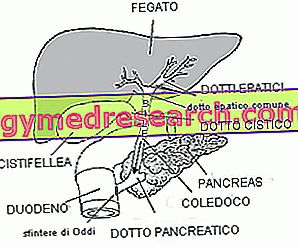Generality
Lung biopsy consists of taking and analyzing in the laboratory a small sample of lung tissue, coming from an individual with a suspected serious lung disease.

The first two methods are minimally invasive, but unfortunately not very specific, ambulatory examinations; open-lung pulmonary biopsy, on the other hand, is a real surgical operation, whose possible complications are counterbalanced by a great specificity.
What is lung biopsy?
Lung biopsy is a diagnostic procedure that consists of collecting and analyzing in the laboratory a more or less extensive sample of lung tissue.
The collection can take place in at least 3 different ways.
The choice of the method used for the collection is the responsibility of the attending physician and depends on the patient's general state of health and on the size of the sample to be analyzed. In fact, as we will see in the next chapters, there are minimally invasive, but not very specific, procedural methods and rather invasive, but very specific and reliable procedural methods from the point of view of results.
Briefly, the 3 techniques for collecting a lung tissue sample are:
- Bronchoscopic biopsy
- Pulmonary needle biopsy (or pulmonary needle aspiration )
- "Open-air" lung biopsy
When you run
Doctors consider it appropriate to perform a lung biopsy when:
- Based on the physical examination, they suspect the presence of a serious lung disease, such as pulmonary fibrosis, interstitial disease (or pulmonary interstitial disease), sarcoidosis or lung cancer.
- They need to establish, with precision, the characteristics of severe pneumonia. Pneumonia refers to an inflammatory process affecting the pulmonary alveoli.
- From the previous diagnostic procedures, all less invasive than lung biopsy (chest radiography, etc.), they failed to conclude with precision what is the exact origin of the patient's respiratory and pulmonary problems.
Preparation
It is usual practice that, a few days before the lung biopsy, the doctor in charge of performing it (or a qualified member of his staff) meets the patient, to inform him of the details of the procedure and to interrogate him about:
- The clinical history . When we talk about clinical history, we are referring to all the pathologies from which an individual suffers or has suffered in the past. It is essential to communicate the presence of coagulation diseases (for example hemophilia).
- The drugs taken at that time . It is particularly important to report to the doctor the use of antiplatelet agents (aspirin or clopidogrel) and / or anticoagulants (warfarin), as these preparations, "diluting the blood", are a factor favoring bleeding.
Some types of lung biopsy include one or more surgical incisions and minimal blood loss from these. If an individual does not stop anti-aggregation or anticoagulant treatment, this blood loss can be dangerous.
- Any allergies to certain medicines, in particular to anesthetics and sedatives . During the various methods of lung biopsy, anesthesia is used (local or general) and sedatives are used; all this, in the presence of an allergy or an intolerance, could be very dangerous.
If the sampling procedure consists of a small surgical procedure, complete with general anesthesia and brief hospitalization ("open-air" lung biopsy), a blood test, an electrocardiogram and a blood pressure check are also provided. In other words, vital signs are checked.
If the patient was a woman and even suspected of being pregnant, it is advisable to report this suspicion to the doctor.
FASTING
When general anesthesia is required, as on the occasion of the "open-air" lung biopsy, the patient, on the day of the examination, is required to appear at full fast for at least 8 hours.
Generally, if the procedure is held in the morning, doctors advise eating the last meal by midnight on the previous day.
The only drink granted, until a few hours before the intervention, is water.
Bronchoscopic biopsy
The bronchoscopic biopsy (or bronchoscopy ) consists in taking the lung tissue by means of an instrument, the bronchoscope (hence the name of bronchoscopic biopsy), which the doctor introduces from the mouth or nose and leads up to the level of the lungs.
This procedure requires the administration of a local anesthetic in spray and can last from a minimum of 30 minutes to a maximum of 60 minutes.
bronchoscope
The bronchoscope commonly used is a very thin, flexible tube equipped with an optical fiber camera. The latter is used by the examining doctor to find his way in the pulmonary airways (in particular the bronchi) and to identify the area of abnormal lung tissue, which should be taken.
Once the most indicative area has been identified for subsequent analyzes, tissue sample collection takes place.
Sometimes, although now more and more rarely, rigid bronchoscopes are used.
WHO EXECUTES THE EXAM?
To perform a bronchoscopic biopsy, it is generally a pneumologist, that is a doctor who specializes in the diagnosis and treatment of diseases affecting the respiratory system, in particular the lungs.
AFTER THE PROCEDURE
The bronchoscopic biopsy does not foresee any hospitalization, but only a brief period of observation lasting about 1-2 hours.
During this time, the patient undergoes a chest x-ray to understand / see if the passage of the bronchoscope has caused damage to the airways.
SENSATIONS DURING OR AFTER THE PROCEDURE
At the end of the procedure and for several hours, the patient may experience the following discomforts: sore throat, hoarseness, dry throat and difficulty swallowing.
A VARIANT: THE BRONCOALVEOLARE WASH
Sometimes, the doctor uses the bronchoscope to release a saline solution, which disrupts the lung tissue it comes into contact with.
If properly recovered, this solution contains within it a sufficient number of cells, to be observed in the laboratory.
This alternative practice is also called bronchoalveolar lavage .
Table. Advantages and disadvantages of bronchoscopic biopsy.
| Advantages | Disadvantages |
| The sample of tissue taken contains a limited number of cells, all belonging only to the airways. |
Pulmonary needle biopsy
During a pulmonary needle biopsy, the pulmonary cells to be analyzed in the laboratory are taken by means of a long needle inserted into the chest.
SOME DETAILS OF THE PROCEDURE
To identify the exact injection site of the needle, your doctor will use some imaging diagnostic procedures, such as CT, ultrasound or fluoroscopy. In fact, with their execution at the time of the biopsy, it is able to know where the anomalous area of lung tissue resides, which must be taken for laboratory analysis.
At the time of needle insertion, the patient is required to hold his breath and not move his chest: only in this way, the sampling takes place at the desired point.
The entire procedure is performed under local anesthesia (NB: the anesthetized area is obviously the chest) and can last between 30 and 60 minutes.
WHO EXECUTES THE EXAM?
A pulmonary biopsy may be either a radiologist or a pneumologist .
AFTER THE PROCEDURE
Like bronchoscopic biopsy, pulmonary needle biopsy does not include any hospitalization, but only an observation period not exceeding 2 hours.
During this time, the patient must undergo a chest x-ray to ensure that the needle has not damaged the lungs or other neighboring anatomical structures during penetration.
SENSATIONS DURING OR AFTER THE PROCEDURE
During the injection of the anesthetic (NB: this is done using a syringe), the patient may experience stinging or burning pain lasting a few seconds.
At the end of the procedure and the exhaustion of the effects of anesthesia, it is likely that the point of the chest, in which the needle for biopsy has been inserted, is painful.
Table. Advantages and disadvantages of pulmonary needle biopsy.
| Advantages | Disadvantages |
| The sample of tissue taken contains a limited number of cells and all come from a well-circumscribed point. |
"Open-air" lung biopsy
"Open-air" lung biopsy is a full-fledged surgical procedure that involves performing one or more incisions between the ribs and inserting, through the aforementioned incisions, the necessary instrumentation to take the tissue sample.
As anticipated, "open-air" lung biopsy requires general anesthesia. This implies that, at the time of the examination, the patient is completely unconscious.
Due to its delicacy, "open-air" lung biopsy is practiced only when the less invasive lung biopsies (ie bronchoscopic biopsy and pulmonary needle biopsy) have proved to be not exhaustive.
SOME DETAILS OF THE PROCEDURE
The canonical duration of an "open" lung biopsy is about an hour .
At the end of the surgical operations, the operating doctor must perform a pleural drainage for the re-expansion of the lung, from which the tissue sample was taken.
During the operation, in fact, this lung collapses as after a pneumothorax.
Pleural drainage generally lasts a few days.
The incisions are closed with absorbable or non-absorbable stitches. If non-reabsorbable sutures have been applied, they should be removed after 7-14 days.
AFTER THE PROCEDURE
In general, after the procedure, the patient must remain in the hospital for at least a couple of days: during this time, the operating surgeon and medical staff periodically monitor his vital parameters and how his physique responds to the operation.
This is usually a precautionary shelter.
POST-OPERATIVE SENSATIONS
Upon awakening from anesthesia and for the next 12-24 hours, the patient may feel confused and slowed down in reflexes: they are the normal after-effects of general anesthesia.
Regarding the effects of the operation, "open-air" lung biopsy often causes, for at least a few days: tiredness, chest pain during breathing, slight blood loss at the incision point and sore throat (NB: is due to the respirator used for general anesthesia).
A VARIANT: THORACOSCOPIC BIOPSY
An alternative surgery to "open-air" lung biopsy is the so-called thoracoscopic lung biopsy, also known as video-assisted thoracoscopic biopsy (in English is VATS, from Video-Assisted Thoracoscopic Surgery).
By now practiced by an increasing number of hospital centers, VATS provides for the use of a tool called a thoracoscope .
The thoracoscope has, at one end, a light and a fiber optic camera, connected to a monitor; light and camera allow the operating surgeon to orient himself better inside the thoracic cavity and to identify more precisely the sampling area.
As for the procedure, the operative steps are not very different from those of an "open-air" lung biopsy: however, general anesthesia is provided, as well as the execution of some incisions on the chest for the insertion of the surgical instrumentation (between which also the thoracoscope) and the realization of pleural drainage.
To justify its increasingly widespread use are at least a couple of factors:
- The reduced dimensions of surgical incisions. This is possible thanks to the camera, which allows the thoracic cavity to be seen from the inside.
- The hospitalization period is shorter.
Table. Advantages and disadvantages of "open-air" lung biopsy.
| Advantages | Disadvantages |
It is the most exhaustive type of lung biopsy, as the sample taken is of the size necessary for a complete laboratory analysis |
|
risks
Currently, lung biopsy is considered a low-risk diagnostic procedure.
However, it should be pointed out that the appearance of complications depends very much on the type of lung biopsy performed. In fact, bronchoscopic biopsy and pulmonary needle biopsy are less dangerous than "open-air" lung biopsy or its thoracoscopic variant.
Moreover, the first two are not particularly complex outpatient examinations, while the second two are full-fledged surgical interventions (and during any surgery, even the simplest, complications may arise).
The possible complications of a lung biopsy, performed in surgical mode.
- pneumothorax
- Severe blood loss
- Infections, pneumonia type
- Bronchospasm and consequent respiratory problems
- arrhythmias
- Death. It is a very rare event, which can occur because the surgery strongly aggravates the ongoing lung disease or because general anesthesia has triggered an abnormal lethal reaction.
WHEN TO CONTACT THE DOCTOR?
After a lung biopsy, you should contact your doctor immediately (or go to a hospital) in the presence of:
- Severe chest pain
- Dizziness
- Respiratory problems
- Worsening of wound bleeding
- Cough with blood (hemoptysis)
Results
Except in special cases (tuberculosis), after a lung biopsy, laboratory results are available after 2-4 days.



